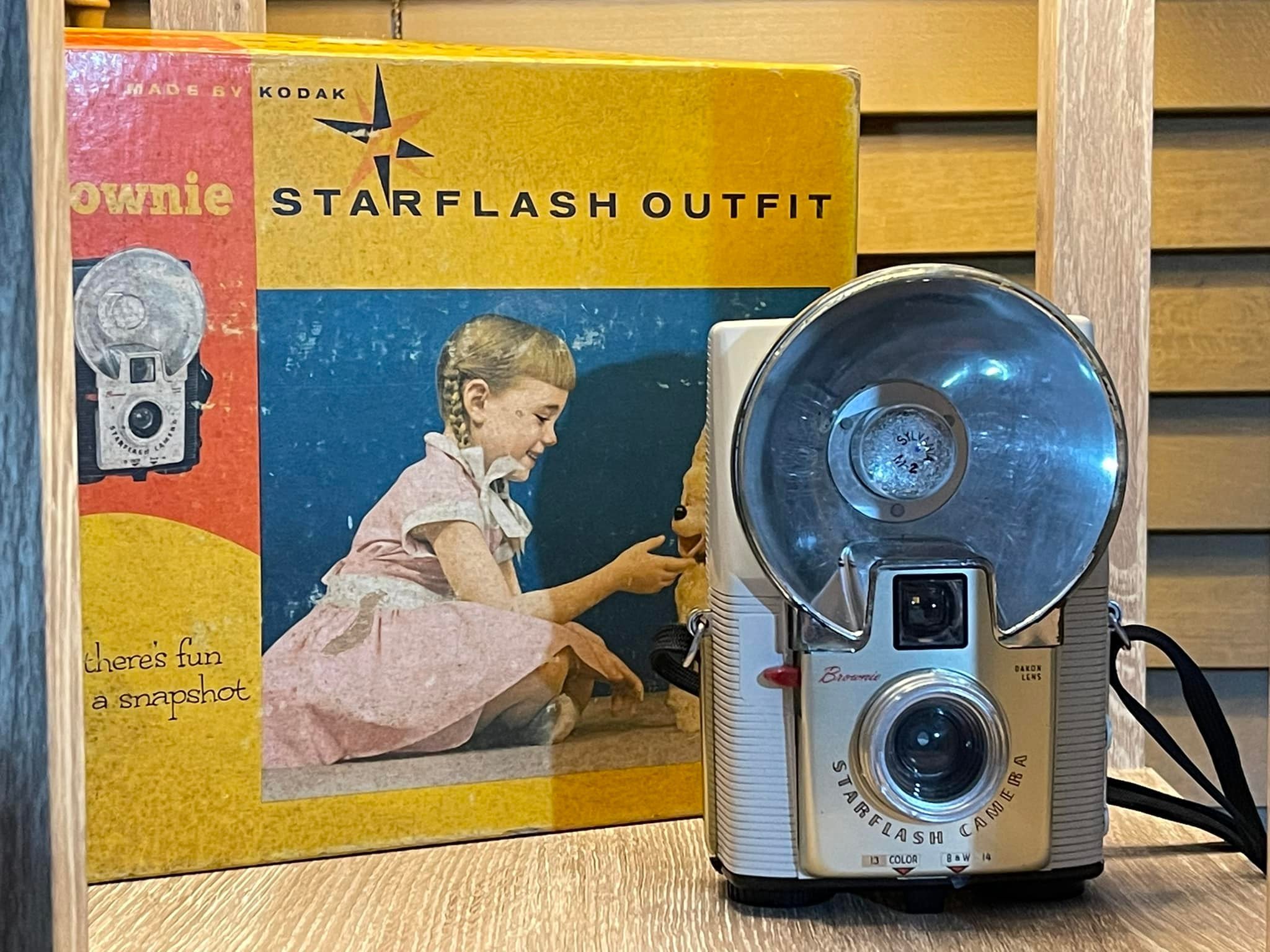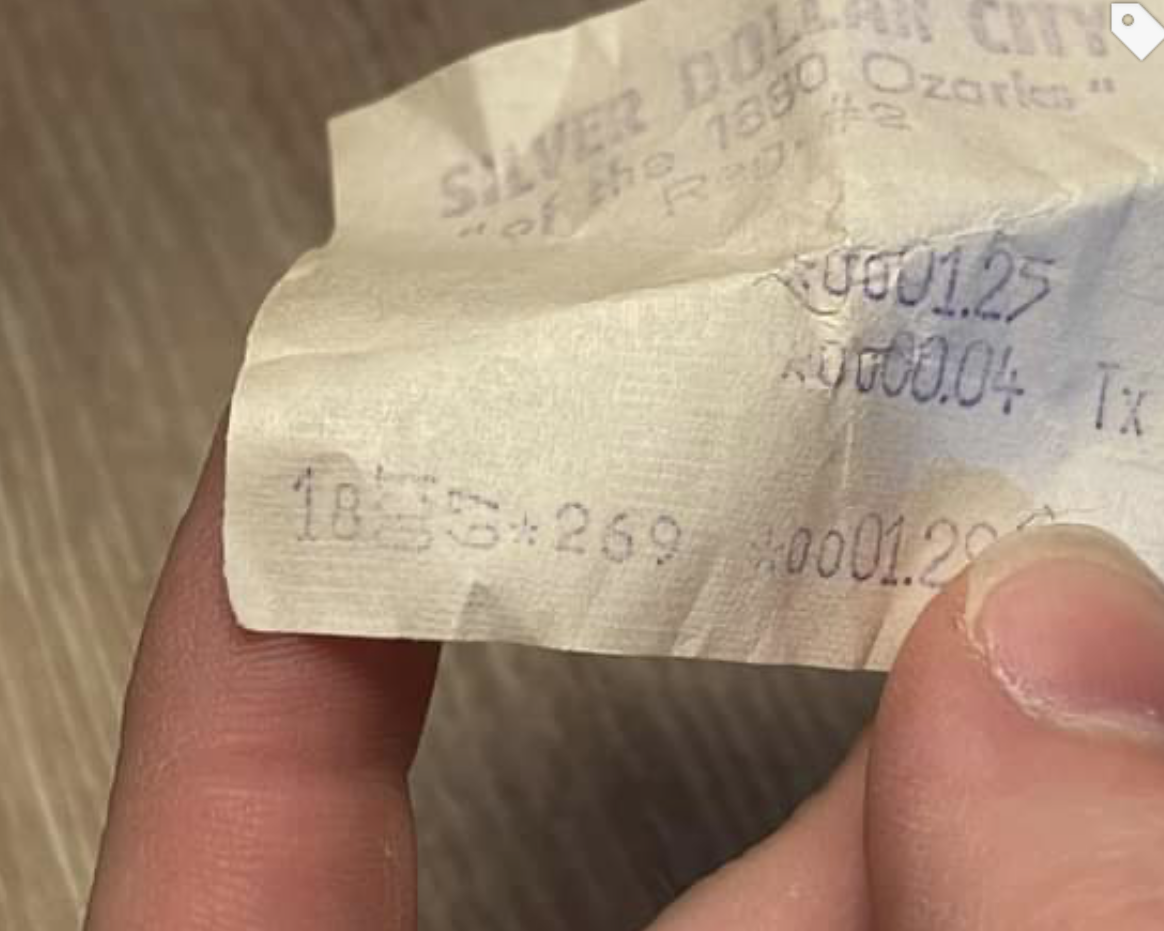Time Capsule in Grain - How I Developed Fifty Year Old Expired Film
About a year ago, I purchased a Kodak Brownie Starflash Camera at a local thrift store.
The Starflash was introduced in March of 1957 and was discontinued in June of 1965. It had a rotary shutter and shot 127 sized film. The camera has a molded plastic body, optical direct vision finder, and a built-in flashgun for capless bulbs. The camera was designed by influential camera designer Arthur Hunt Crapsey, Jr (1919-1998).
I have a habit of buying old cameras, especially if they have abandoned rolls of film in them–as this one did–because I like to try and develop them and see if the images can be saved. Developing expired rolls of film is like opening a Christmas present where the present is nothing 9 times out of 10. Too often, the cameras are kept in a hot attic or some other place that ruins the film over time and makes developing it impossible.
This particular camera and film was soon forgotten and wasn't discovered until I cleaned my office around the holidays.
A small receipt had been pushed into the bottom of the film box. The film, Kodak Verichrome 127 film, had expired in 1970 and the receipt documented a purchase at Silver Dollar City (for those who don’t know, Silver Dollar City is an 1880’s themed theme park located in Branson Missouri) and was dated October 18th, 1967. Could this receipt be for the very film in the camera and date the images? I could only hope.
There are many differing opinions about developing expired films or if you should even waste your time with them. I had read on an internet forum that one person had had luck developing 127 black and white films–roughly the same age as the roll I was going to attempt to develop–with D76 chemistry.
So, I broke out my photochemistry and got to work.
I developed the film for 10 minutes at 68 degrees Fahrenheit with a stock D-76 solution followed by 1 minute of washing it underwater (I find stop baths or hypo clear to be unnecessary) and then a seven-minute fix. Finally, I washed the film under a running tap for 10 minutes and 30 seconds.
Here are my results!
I was amazed to find the images had survived five decades of sitting inside an old camera.
Some of the pictures appear to be taken at Silver Dollar City, giving more weight to the idea the film was purchased at Silver Dollar City on October 18th, 1967.
Now that I had success developing five decades-year-old film, I was inspired to bust out a roll of unexposed 127 film I had purchased years ago at a flea market–which had expired in 1971.
I turned to eBay to buy some vintage Vintage Sylvania M3B Blue Dot Flashbulbs. With expired film, due to the loss of sensitivity over time, you're I wouldn't have even begun to attempt to shoot with this camera without a flash.
With flashbulb installed, I sat out to document my family's Christmas the same way the girls of silver dollar city did that day in 1967. Simply point and shoot.
These were my results.
This was such a fun little experiment. Everyone's experience with expired film will differ, so your mileage may vary. From what I understand, the black and white film holds up over time far better than color film, which is something else to consider. However, if you have the time and some old film lying around, you might as well give it a go.
Why not? If nothing is found on the film, there's nothing lost.
But you never know. If you develop some old expired or rediscovered film, you may just be rediscovering someone else's forgotten moment.
Final Thoughts:
I took the images with my expired film intentionally in a point-and-shoot manner, without much thought given, like the camera was designed for someone to do. However, I still have two rolls of 127, and I'm excited about the prospect of using the film in a more artistic and thought-out way.



















